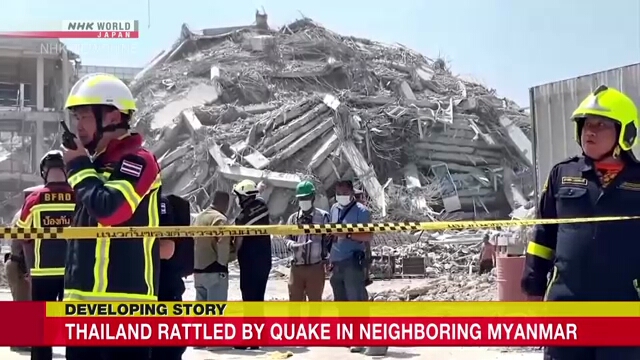Southeast Asia Rattled by Powerful Myanmar Quake: Regional Impact and Humanitarian Response
A powerful earthquake struck Southeast Asia, shaking Myanmar and sending tremors across the region. The magnitude 6.8 quake triggered widespread panic and left a trail of damage, highlighting the vulnerability of the region to seismic activity.
The earthquake, which struck near the border of Myanmar and India on [Insert Date], sent shockwaves through several Southeast Asian nations. While the epicenter was located in a relatively remote area of Myanmar, the quake's intensity was felt far and wide, triggering fears of aftershocks and potential widespread damage.
Myanmar: The Epicenter of Devastation
Myanmar, already grappling with ongoing political instability, bore the brunt of the earthquake's impact. Reports suggest significant damage to infrastructure, including [mention specific examples like: roads, bridges, buildings]. The remote location of the epicenter, coupled with existing infrastructure limitations, is hindering rescue and relief efforts.
Challenges Facing Relief Efforts:
- Accessibility: Reaching affected areas is proving challenging due to damaged roads and limited communication networks.
- Resource Constraints: Myanmar's ongoing political crisis has strained resources, limiting the capacity for an effective immediate response.
- Aftershocks: The continuing threat of aftershocks poses significant risks to rescue workers and those affected.
Regional Tremors and International Response
The quake's tremors were felt across the region, causing panic in neighboring countries like Thailand, Bangladesh, and India. While damage in these countries appears to be less extensive than in Myanmar, the event serves as a stark reminder of the seismic vulnerability of Southeast Asia.
International Aid and Collaboration:
Several international organizations, including [mention specific organizations like: the UN, Red Cross, etc.], have pledged support and are coordinating relief efforts. Neighboring countries are also providing assistance, demonstrating regional solidarity in the face of disaster. This international collaboration is crucial in ensuring a swift and effective response to the immediate needs of the affected population.
Learning from the Quake: Strengthening Regional Resilience
This earthquake underscores the urgent need for enhanced disaster preparedness and infrastructure development across Southeast Asia. Investing in seismic-resistant construction, strengthening early warning systems, and developing comprehensive disaster response plans are crucial for mitigating future risks.
Key Takeaways for the Future:
- Improved Infrastructure: Investing in earthquake-resistant buildings and transportation infrastructure is paramount.
- Early Warning Systems: Enhancement of early warning systems to provide timely alerts to populations.
- Disaster Preparedness Training: Regular training and drills to improve community preparedness and response capacity.
- Regional Cooperation: Continued strengthening of regional cooperation and coordination mechanisms for effective disaster management.
The earthquake in Myanmar serves as a sobering reminder of the unpredictable nature of natural disasters and the importance of international cooperation and proactive disaster preparedness. The ongoing situation demands continued attention and support to ensure the affected populations receive the necessary aid and assistance in the long road to recovery.
For up-to-date information on the situation, please refer to reputable news sources such as [link to reputable news source 1] and [link to reputable news source 2].
[Optional: Include a call to action, such as a link to a donation page for relevant charities].
